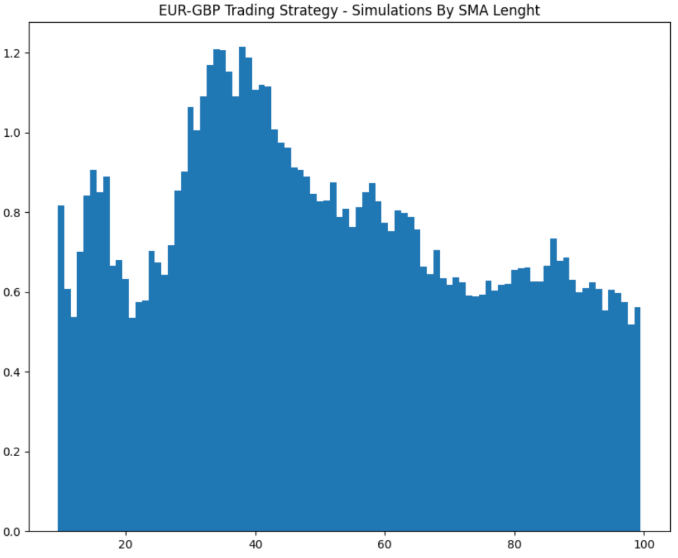Foreign exchange trading strategies driven purely by macroeconomic fundamentals remain relatively rare in today’s algorithmic landscape. However, when designed around sound principles such as risk parity and diversification—across both macroeconomic indicators and currency markets—these strategies have the potential to deliver robust, uncorrelated returns. This post explores one such approach, relying solely on macro signals to inform FX forward positioning across a global set of currencies.
What Defines a Pure Macro FX Strategy?
A pure macro FX strategy hinges exclusively on economic fundamentals rather than price trends or momentum indicators. Unlike mixed models, these strategies filter out technical inputs and instead rely on quantamental data—real-time indicators derived from economic data series, adjusted to reflect market perception at any given point.
While this narrows the range of predictive inputs, it provides a clearer path toward genuine alpha—returns derived not from exposure to common risk premia but from distinct economic insight. Importantly, pure macro approaches are less likely to fall victim to crowding or overlapping with widely-followed technical factors, which can dilute performance.
Building the Strategy: Countries, Concepts, and Data
The strategy covers a broad universe of 26 currencies, split between developed and emerging markets. These include countries with liquid forward or non-deliverable forward markets and relatively free-floating exchange rates since the year 2000. Periods during which currencies were pegged or not freely tradable are excluded to preserve signal reliability.
To determine which currencies to go long or short against the base currency (typically the USD or EUR), we construct a composite macroeconomic signal—termed the “external strength score.” This score blends three thematic categories:
- Growth Trends: Including real-time estimates of GDP growth and shifts in manufacturing sentiment.
- External Balances: Evaluating recent changes in trade and current account balances as percentages of GDP.
- Terms of Trade: Measuring the ratio of export to import prices using both commodity and broader trade data.
Each indicator within a category is normalized and combined using equal weights. This equal weighting scheme, a form of conceptual risk parity, ensures that no single input dominates the score. The resulting category-level scores are then re-normalized and averaged to form the final external strength signal.
Why Volatility Targeting Matters
To make returns comparable across currencies and to reflect varying sensitivities to macro shocks, the strategy uses volatility-targeted FX forward returns. Positions are sized to maintain a consistent 10% annualized volatility. This approach helps reduce distortion from highly volatile or illiquid currencies and ensures that signals are applied uniformly, regardless of a country’s size or market depth.
Evidence of Predictive Power
Backtests from 2000 to mid-2023 demonstrate that the external strength score has a statistically significant positive relationship with subsequent FX forward returns. The signal correctly forecasts return direction more than 52% of the time on average, with even higher hit rates in many individual countries and years.
Importantly, the signal performs consistently across different macro categories. Growth indicators were more effective during periods of global expansion, while trade balances and terms-of-trade played a bigger role in later years marked by financial instability and geopolitical shifts. This complementary behavior is key to the strategy’s resilience over time.
Strategy Performance: A Case for Pure Alpha
When applied to a naïve trading model with monthly rebalancing and capped signal strength, the strategy delivers impressive results. The simulated Sharpe ratio reaches 0.8 over 23 years, and its performance is uncorrelated with major benchmarks such as equities, bonds, or conventional FX portfolios. This lack of overlap strongly suggests that the strategy taps into an independent return stream.
Even a simplified version limited to developed markets generates profits, though with a reduced Sharpe of 0.33. The broader, more diversified portfolio significantly outperforms, benefiting from the added information and variation present in emerging market currencies.
The Power of Double Diversification
A standout feature of the strategy is its use of “double diversification.” This involves spreading exposure both across a wide range of currencies and across distinct macroeconomic concepts.
- Currency Diversification: Helps avoid overexposure to country-specific shocks. Despite some correlation among FX returns, macro signals are often distinct, reducing the risk of signal crowding.
- Conceptual Diversification: Mitigates the cyclical nature of individual macro signals. For instance, growth data may drive markets in some periods, while external balances matter more in others. By balancing inputs from all three areas, the strategy adapts naturally to different market regimes.
In many cases, this diversified approach even outperforms individual indicators selected with hindsight. For example, while trade balances may appear most predictive in a given period, they don’t consistently outperform the equally weighted composite. This reinforces the benefit of blending signals that are theoretically sound and minimally correlated.
Final Thoughts
Pure macro FX strategies are demanding—they require deep domain knowledge, rigorous data normalization, and careful portfolio construction. But when implemented thoughtfully, they offer a rare combination of meaningful alpha and low correlation to traditional risk factors.
By leaning on economic fundamentals and reinforcing signals with diversification and volatility control, macro-based FX strategies can offer a sustainable edge in an increasingly crowded trading environment. For institutions looking to diversify away from traditional price-based strategies, this approach provides a compelling path forward.
